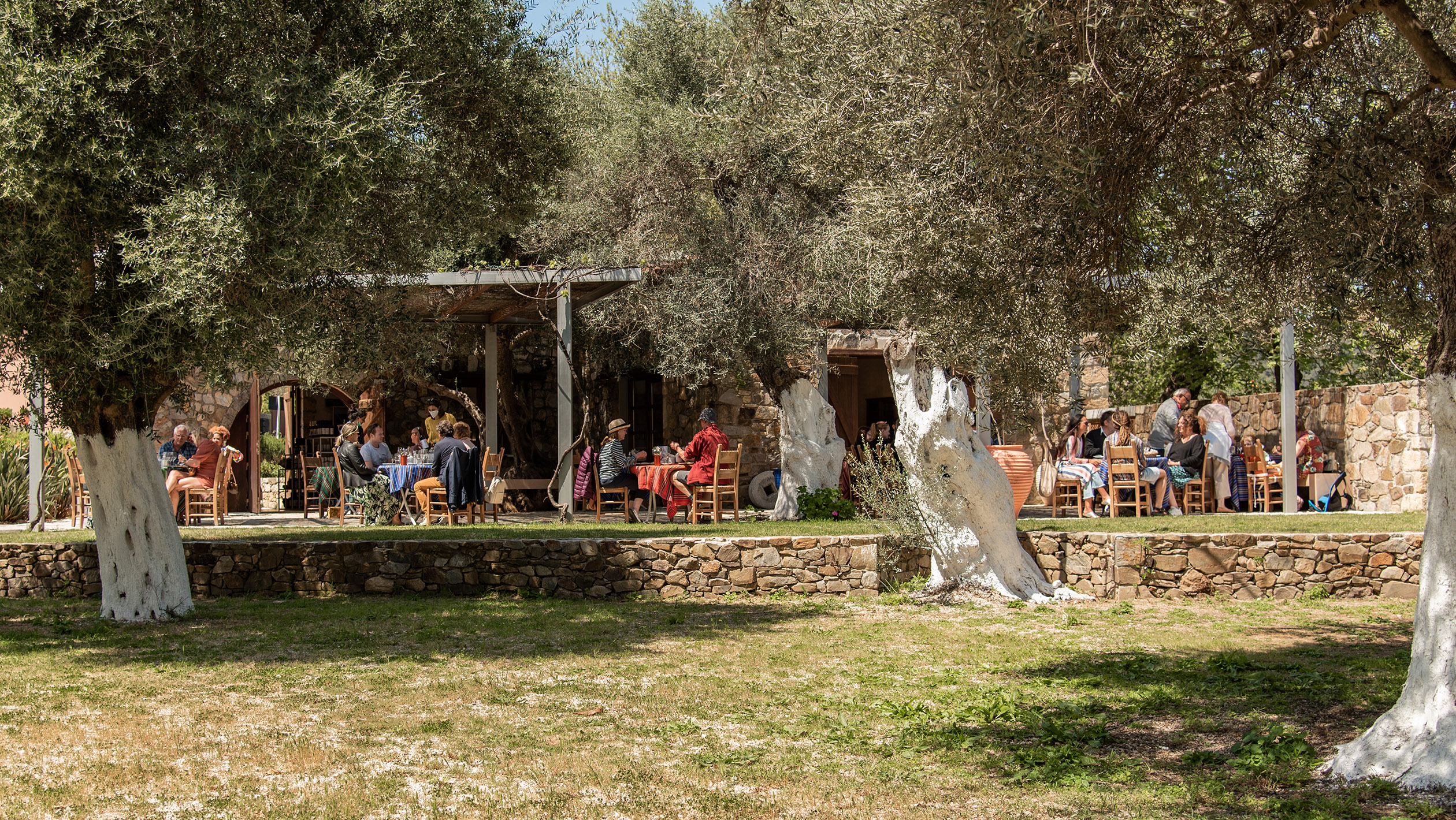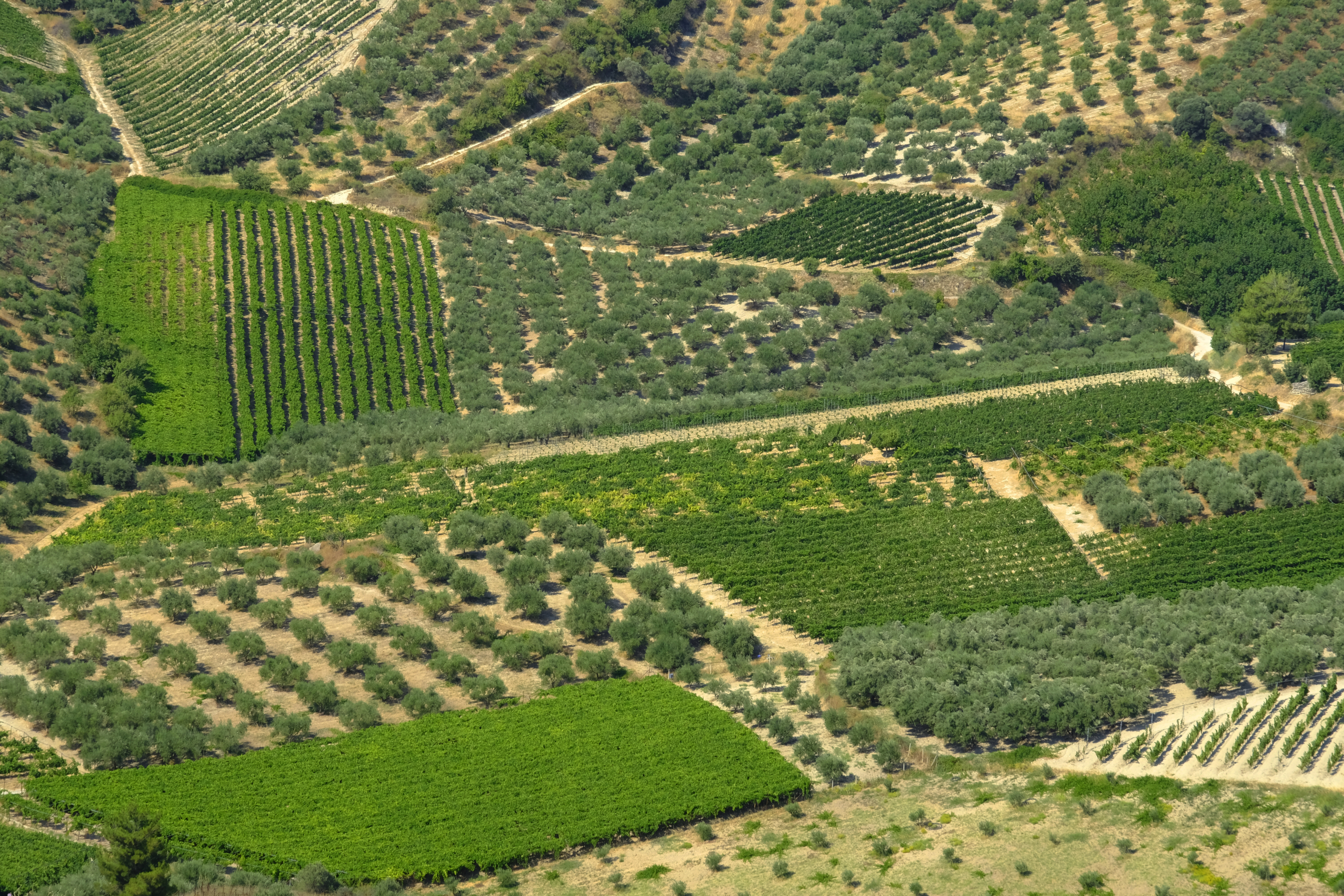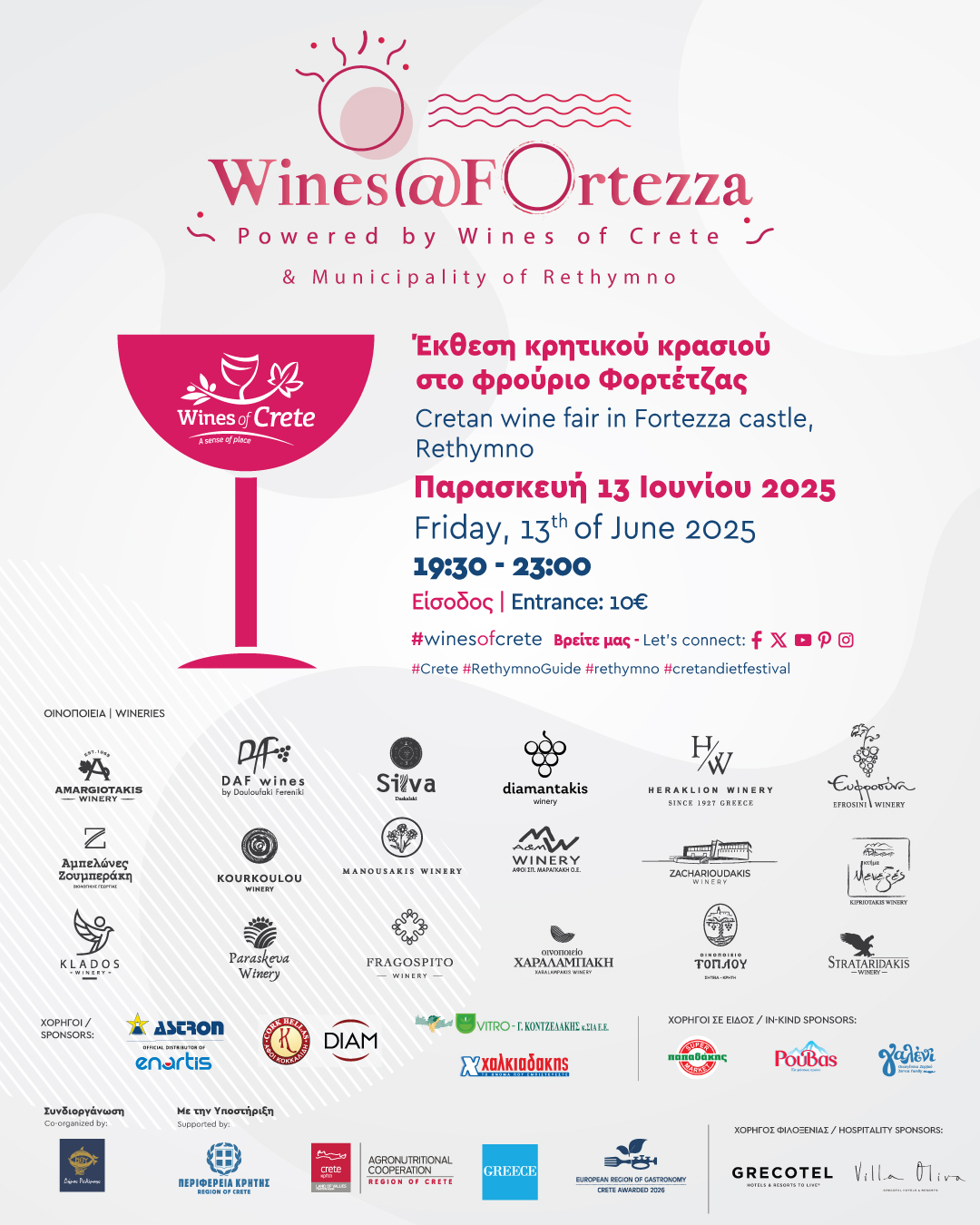The fact that evidence of winemaking has been found on Crete dating to the Bronze Age makes it one of Europe’s oldest known wine regions, and would seem to put it squarely out of the “emerging” category. However, due to a convergence of political and environmental factors, plus a shifting tourism landscape, the modern era of Cretan winemaking is still effectively in its infancy.
Crete currently accounts for over 10 percent of the wine produced in Greece, from 11 native varieties and seven PDOs, but most of the island industry’s growth has taken place only in the past 20 years. “A combination of ancient heritage and modern exploration makes Crete’s wine scene both rooted in history, and at the beginning of a new era,” says Nikos Douloufakis, the owner and enologist of Douloufakis Winery.
A Late Phylloxera Outbreak
Of singular importance to this renaissance is that phylloxera came to Crete as late as 1977—well over a century after it plagued Europe’s mainland—wiping out Crete’s vineyards at a time when European wines were rising in popularity worldwide. While devastating to the agricultural industry of Greece’s largest island, this outbreak, timed with the end of Greek dictatorship, plus the growth of post-World War II tourism across Europe, created an opportunity for young, ambitious winemakers in Crete.
“It was a fresh start,” says Afshin Molavi, the owner of Manousakis Winery, of the blank-slating that was arguably necessary to push Crete’s wine industry into unfamiliar territory, and eventually onto an international stage.
Prior to phylloxera, winemaking was common across Crete, with many rural citizens making their own. “Wine was not a luxury,” says Giorgios Mastrakoulis, the events coordinator of Wines of Crete, “and winemaking was just part of an average person’s year,” utilizing communal wine presses located in village centers. Commercially made wine in Crete was therefore of little value to local consumers, and was dominated by a few large co-ops, who largely made wine in bulk, and very little bottled.
What’s more, viticulture and vinification practices favored quantity over quality. According to Douloufakis, “Vineyards were planted with a mix of native grape varieties in what was known as logado, meaning mixed local varieties.”
This changed when nearly 20,000 acres of vineyards were replanted between 1988 and 1992. Based largely on input from European enologists, the majority of these vineyards were planted with international varieties rather than native grapes. “The first people to try to renovate the vineyards didn’t know the value of the Cretan varieties,” says Maria Titaki, the co-owner and enologist of Titakis Wines, one of the oldest wineries in Crete. Likewise, Cretan producers also had little to no experience with monocultural vineyards or varietal wines, and weren’t aware of their native grapes’ individual characteristics.
Cabernet Sauvignon, Chardonnay, and Syrah therefore became some of Crete’s most important grapes during its agricultural reconstruction. Not only did these international grapes succeed in Crete’s climate, there was also an assumption that international varieties would have a greater appeal both to Crete’s visitors, and to Crete’s local population, who likewise had no familiarity with or particular esteem for Crete’s native grapes as individual wines. “For quite a long time, there was an idea that something foreign would automatically be something better,” says Mastrakoulis.

The Modern Era of Cretan Wine
Today, however, the Cretan wine landscape is driven by indigenous varieties like Vilana, Vidiano, and Liatiko, with young, ambitious producers that are merging tradition and innovation toward the promotion of the region and its capabilities. Whereas Crete used to have only a few large cooperative wineries, the industry has grown to 38 wineries in 2023, mostly boutique in nature, more than doubling itself in the past 15 years. A mixture of ambition, data, and a new wave of tourism rooted in authenticity over familiarity all helped to bring about the restoration of Crete’s native grapes, and usher in Crete’s modern winemaking era.
To begin, a rising interest in enology followed the reconstruction of the vineyards; Titaki and Douloufakis were among those who studied abroad to bring elevated viticulture and vinification techniques back to Crete. With that, “Vineyards started to be cultivated based on microclimate data and scientific vine management techniques,” says Douloufakis, all of which pointed toward the native varieties. The rising popularity internationally of Greek grapes from other regions also contributed. “Because of the interest in Assyrtiko [from Santorini], and then suddenly seeing Nemea getting famous, then Naoussa, there’s a feeling we should also look in our own backyard,” says Molavi.
The reintroduction of Cretan varieties took place as early as the 1990s, with most wineries planting or grafting in earnest by the early to mid 2000s, along with the establishment of several Cretan PDOs. Early wines made with native grapes during this time typically appeared in blends with international varieties to aid in their acceptance with visitors and locals alike: “People didn’t know exactly what to trust from the Cretan varieties,” says Titaki. “If you also have a common variety in the glass it’s easier to make them try it.”

In the last decade, however, tourism has become a major factor in Crete’s success with its native grapes, in a turnabout from the assumption that visitors would primarily prefer familiar ones. Authenticity is at the forefront of visitors’ preferences in recent years, and Cretan winemakers have sought to capitalize on that. Most wineries on Crete now offer tasting rooms, many of which are still small enough to have the winemakers themselves on hand to speak about their wines. “Everyone’s coming now saying they just want the native varieties,” says Molavi.
Authenticity is also a major factor in Crete’s ability to export wines, a practice which has been growing steadily over the past several years, with sales of Cretan wines to the U.S. almost quadrupling over the past 10 years. “Crete would never be able to focus on Cabernet Sauvignon, for example, and compete with other established winemaking countries,” says Mastrakoulis. “There’s a realization that in order to be able to export our wine we needed to have a product that was different and that it had its own identity.”
“In a competitive global wine market, regions that offer distinctive native varietals [sic] such as Crete can stand out from the crowd,” adds Douloufakis. “Those who produce wines from unique and lesser-known grapes can find a niche market of consumers looking for something different.”




